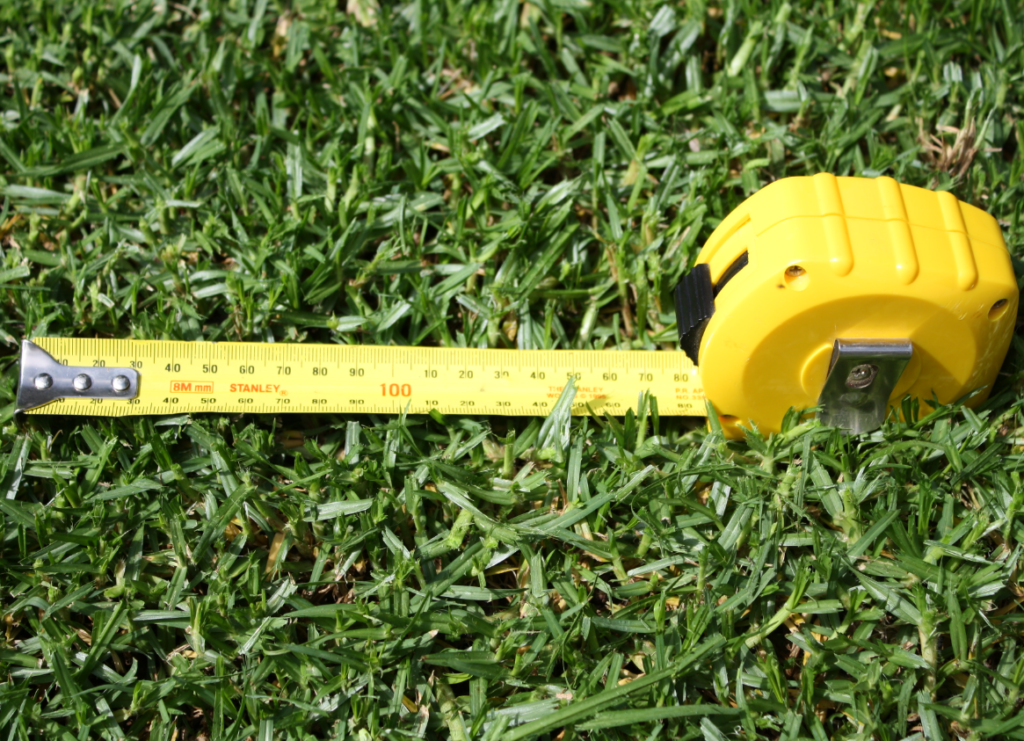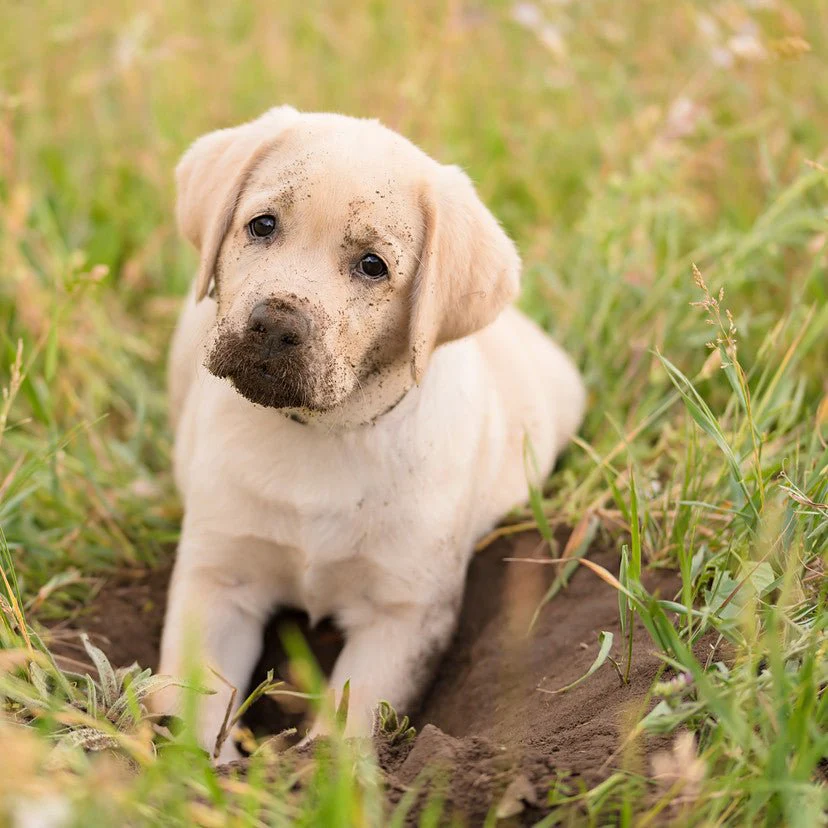Measuring your yard’s square footage is an essential step when buying sod. It helps you to determine the amount of sod required for your lawn, which in turn helps you to calculate the cost of sod and the quantity of soil, fertilizer, and other materials that you may need. In this blog post, we will explain the process of how to manually measure your yard’s square footage for buying sod.
If you’d rather use an app or an online tool, plenty are out there! We have a tool on our website under our home page labeled area calculator that you can also use. However, there are some cases where a digital program may not be the simplest way to measure your square footage. For example, if your property is irregularly shaped, if it has several sloped regions, if you have multiple landscaped areas that won’t need sod if you have mature trees blocking the aerial view of your property, or if your property isn’t up to date on Google Maps — then it’s worth it to do manual measurements. Below, we cover the steps on how to calculate your sod square footage requirements manually!
Step 1: Prepare the tools
Before measuring, you must prepare the tools required for the job. You will need a measuring tape or a walking measuring wheel, a pencil, and a piece of paper to write down the measurements. You can also use a digital measuring tool or a smartphone app that can measure distances. Whatever method you choose, be prepared to repeat your measurements at least once more.
Step 2: Divide the yard into sections
The next step is to divide your yard into sections. You can do this by drawing a rough sketch of your yard on a piece of paper. Divide the sketch into rectangular or square sections, and give each section a number. This will help you to keep track of the sections and their measurements. If your lawn is a square or rectangle, you can measure the entire thing as one section. However, if you have garden beds, trees, water fixtures, ponds, sheds, or other areas that won’t need sod, dividing the lawn into sections will help you get the most accurate square footage measurements.]
Step 3: Measure the length and width of each section
Using the measuring tape, measure the length and width of each section. Start at one corner of the section and measure the distance to the next corner. You should be measuring along the side of the section, NOT on the diagonal. Write down the length measurement on the piece of paper. Then, measure the distance from the other corner to the opposite side. Write down the width measurement on the piece of paper. Repeat this process for all the sections.
Step 4: Calculate the area of each section
To calculate the area of each section, you need to multiply the length and width measurements. For example, if a section is 10 feet long and 8 feet wide, the area would be 10 x 8 = 80 square feet. Write down the area measurement on the piece of paper next to the section number.
Step 5: Add up the areas of all sections
Once you have measured and calculated the area of each section, add up all the areas to get the total square footage of your yard. For example, if you have four sections with areas of 80, 120, 100, and 60 square feet, the total area would be 80 + 120 + 100 + 60 = 360 square feet.
Step 6: Add a margin of error
Adding a margin of error of around 10% to your total square footage is always a good idea. This will give you some leeway in case you make any mistakes during the measuring process. It’s also a good idea to order a little extra sod to account for any irregular shapes or corners in your yard.
Step 7: Order your sod
Once you have calculated the total square footage of your yard and added a margin of error, you can order your sod. Sod is typically sold by the square foot, so you can simply multiply the total square footage by the cost per square foot to get the total cost of your sod. You can also ask your sod supplier for advice on the amount of sod you need and the best type of sod for your yard.
Green Grass Sod Farms offers online ordering and fast local sod delivery for all of our different sod varieties.





